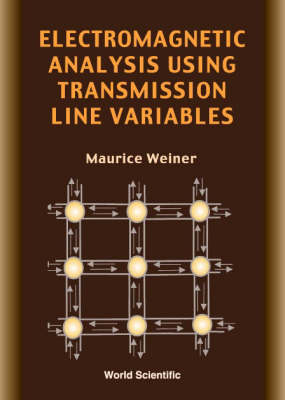
Electromagnetic Analysis Using Transmission Line Variables
Seiten
2001
World Scientific Publishing Co Pte Ltd (Verlag)
978-981-02-4438-5 (ISBN)
World Scientific Publishing Co Pte Ltd (Verlag)
978-981-02-4438-5 (ISBN)
- Titel z.Zt. nicht lieferbar
- Versandkostenfrei innerhalb Deutschlands
- Auch auf Rechnung
- Verfügbarkeit in der Filiale vor Ort prüfen
- Artikel merken
Problems in electromagnetic propagation have traditionally been solved using numerical methods. This text presents a method for solving electromagnetic problems which uses a transmission line matrix (TLM). The propagation space is imagined to be filled with this matrix.
Problems in electromagnetic propagation, especially those with complex geometries, have traditionally been solved using numerical methods, such as the method of finite differences. Unfortunately the mathematical methods suffer from a lack of physical appeal. The researcher or designer often loses sight of the physics underlying the problem, and changes in the mathematical formulation are often not identifiable with any physical change.This book employs a relatively new method for solving electromagnetic problems, one which makes use of a transmission line matrix (TLM). The propagation space is imagined to be filled with this matrix. The propagating fields and physical properties (for example, the presence of conductivity) are then mapped onto the matrix. Mathematically, the procedures are identical with the traditional numerical methods; however, the interpretation and physical appeal of the transmission line matrix are far superior. Any change in the matrix has an immediate physical significance. What is also very important is that the matrix becomes a launching pad for many improvements in the analysis (for example, the nature of coherent waves) using more modern notions of electromagnetic waves. Eventually, the purely mathematical techniques will probably give way to the transmission line matrix method.
Problems in electromagnetic propagation, especially those with complex geometries, have traditionally been solved using numerical methods, such as the method of finite differences. Unfortunately the mathematical methods suffer from a lack of physical appeal. The researcher or designer often loses sight of the physics underlying the problem, and changes in the mathematical formulation are often not identifiable with any physical change.This book employs a relatively new method for solving electromagnetic problems, one which makes use of a transmission line matrix (TLM). The propagation space is imagined to be filled with this matrix. The propagating fields and physical properties (for example, the presence of conductivity) are then mapped onto the matrix. Mathematically, the procedures are identical with the traditional numerical methods; however, the interpretation and physical appeal of the transmission line matrix are far superior. Any change in the matrix has an immediate physical significance. What is also very important is that the matrix becomes a launching pad for many improvements in the analysis (for example, the nature of coherent waves) using more modern notions of electromagnetic waves. Eventually, the purely mathematical techniques will probably give way to the transmission line matrix method.
Introduction to Transmission Lines and Their Application to Electromagnetic Phenomena; Notation and Mapping of Physical Properties; Scattering Equations; Corrections for Plane Wave and Anisotropy Effects; Boundary Conditions and Dispersion; Cell Discharge Properties and Integration of Transport Phenomena into the TLM Matrix; Description of TLM Iteration; SPICE Solutions.
| Erscheint lt. Verlag | 5.3.2001 |
|---|---|
| Verlagsort | Singapore |
| Sprache | englisch |
| Themenwelt | Mathematik / Informatik ► Mathematik ► Angewandte Mathematik |
| Naturwissenschaften ► Physik / Astronomie ► Elektrodynamik | |
| Technik ► Elektrotechnik / Energietechnik | |
| ISBN-10 | 981-02-4438-X / 981024438X |
| ISBN-13 | 978-981-02-4438-5 / 9789810244385 |
| Zustand | Neuware |
| Informationen gemäß Produktsicherheitsverordnung (GPSR) | |
| Haben Sie eine Frage zum Produkt? |
Mehr entdecken
aus dem Bereich
aus dem Bereich
Buch | Softcover (2024)
Springer Vieweg (Verlag)
37,99 €
Buch | Softcover (2024)
Springer Vieweg (Verlag)
44,99 €


